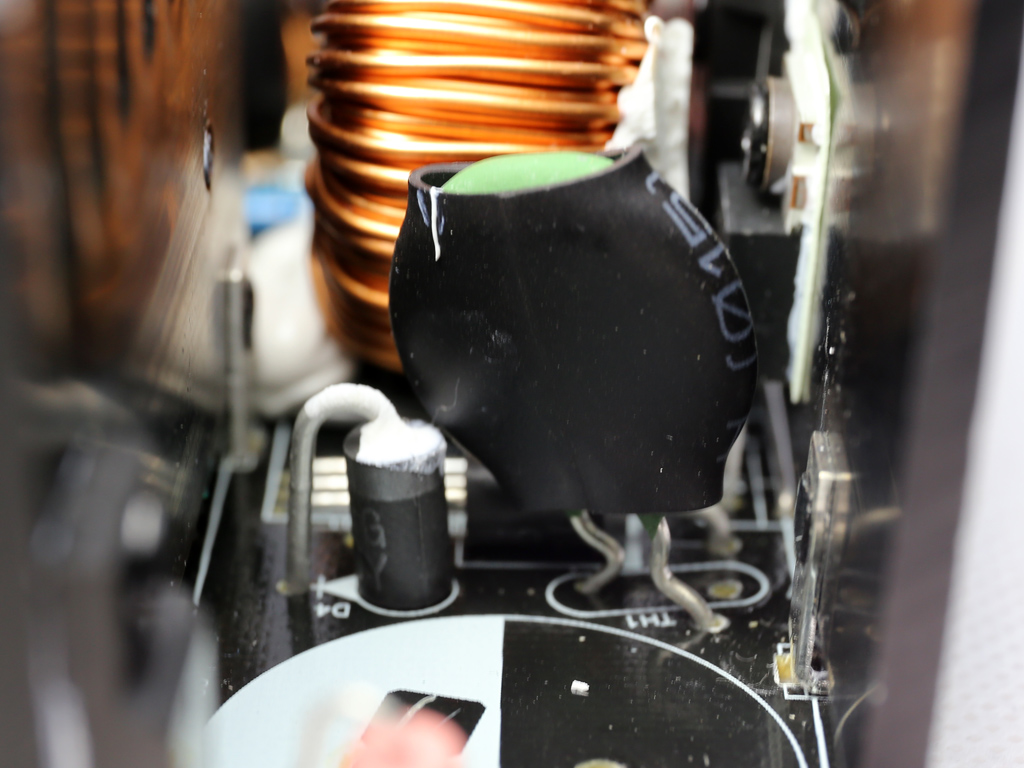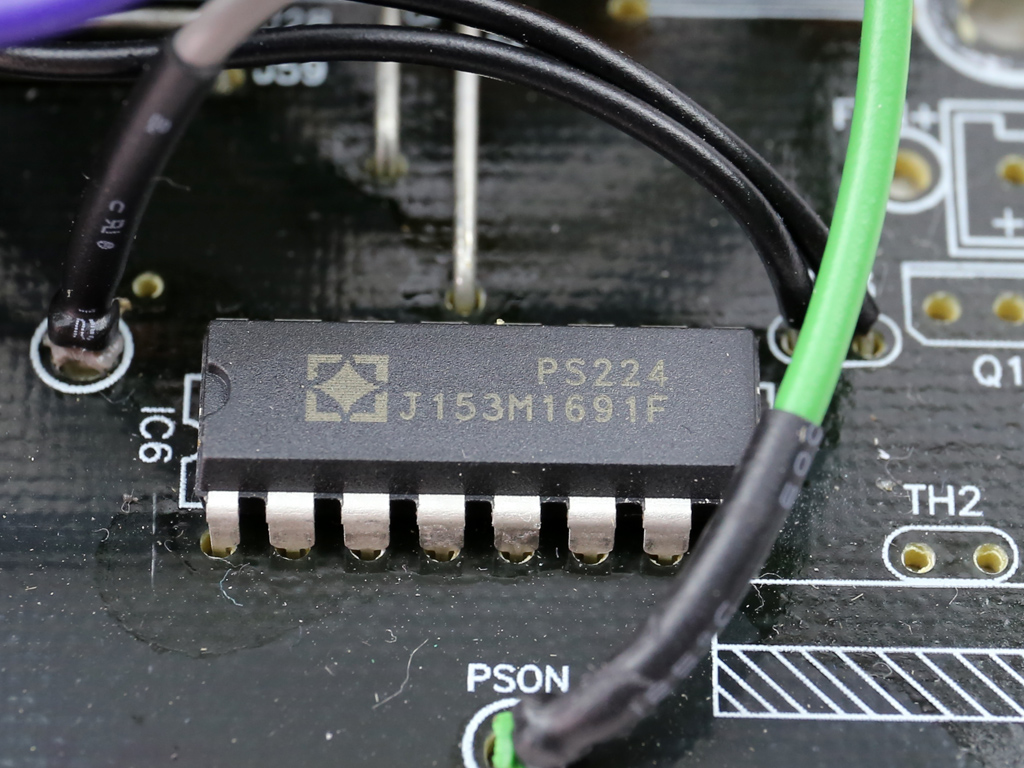Thermaltake Smart Pro RGB 850W PSU Review
Why you can trust Tom's Hardware
Teardown, Component Analysis & Bonus Safety Video
PSU Lighting Video
Power supplies shouldn't be taken apart unless you have the proper training and background. Treat all devices connected to mains voltage with respect, since they can hurt or even kill you if you don't follow all safety guidelines. The video above shows, in a rather funny way, what can happen if you mess with PSUs and don't pay enough attention to what you're doing.
Parts Description
Before proceeding with this page, we strongly encourage you to a look at our PSUs 101 article, which provides valuable information about PSUs and their operation, allowing you to better understand the components we're about to discuss. Our main tools for disassembling PSUs are a Thermaltronics soldering and rework station and a Hakko FR-300 desoldering gun. Finally, for the identification of tiny parts we use an Andonstar HDMI digital microscope.
| General Data | |
|---|---|
| Manufacturer (OEM) | Sirfa |
| Platform Model | - |
| Primary Side | |
| Transient Filter | 4x Y caps, 2x X caps, 2x CM chokes, 1x MOV, 1x CM02X |
| Inrush Protection | NTC Thermistor |
| Bridge Rectifier(s) | 2x GBU805 (600V, 8A @ 125°C) |
| APFC MOSFETs | 2x Infineon SPW20N60C3 (650V, 13.1A @ 100°C, 0.19Ω) |
| APFC Boost Diode | 1x Unisonic BYC15-600 (600V, 15A @ 98°C) |
| Hold-up Cap(s) | 1x Rubycon (400V, 680uF, 2000h @ 105°C, MXH) |
| Main Switchers | 2x Infineon IPA50R140CP (550V, 15A @ 100°C, 0.14Ω) |
| Combo APFC/PWM Controller | Champion CM6806 & CM03AX Green PFC controller |
| Topology | Primary side: Double-Forward Secondary side: Synchronous Rectification & DC-DC converters |
| Secondary Side | |
| +12V MOSFETs | 4x Infineon IPP052NE7N3 G (75V, 80A @ 100°C, 5.2mΩ) |
| 5V & 3.3V | DC-DC Converters: 8x Infineon IPD060N03L G (30V, 50A @ 100°C, 6mΩ) PWM Controller: Anpec APW7159C |
| Filtering Capacitors | Electrolytics: Teapo (1-3000h @ 105°C, SC) Polymers: Teapo |
| Supervisor IC | SITI PS224 (OVP, UVP, OCP, SCP, PG) |
| Fan Model | Hong Sheng A1425H12S (140mm, 9 - 13.8V, 0.39A, 1800 RPM, 97.2 CFM, 36.2 dB[A]) |
| 5VSB Circuit | |
| Switching FET | 1x UTC 2N60L (600V, 2A @ 25°C, <5Ω) |
| Rectifier | 1x SBL05L40C (45V, 5A per leg) |
| -12V Circuit | |
| Rectifier | KIA 7912PI |


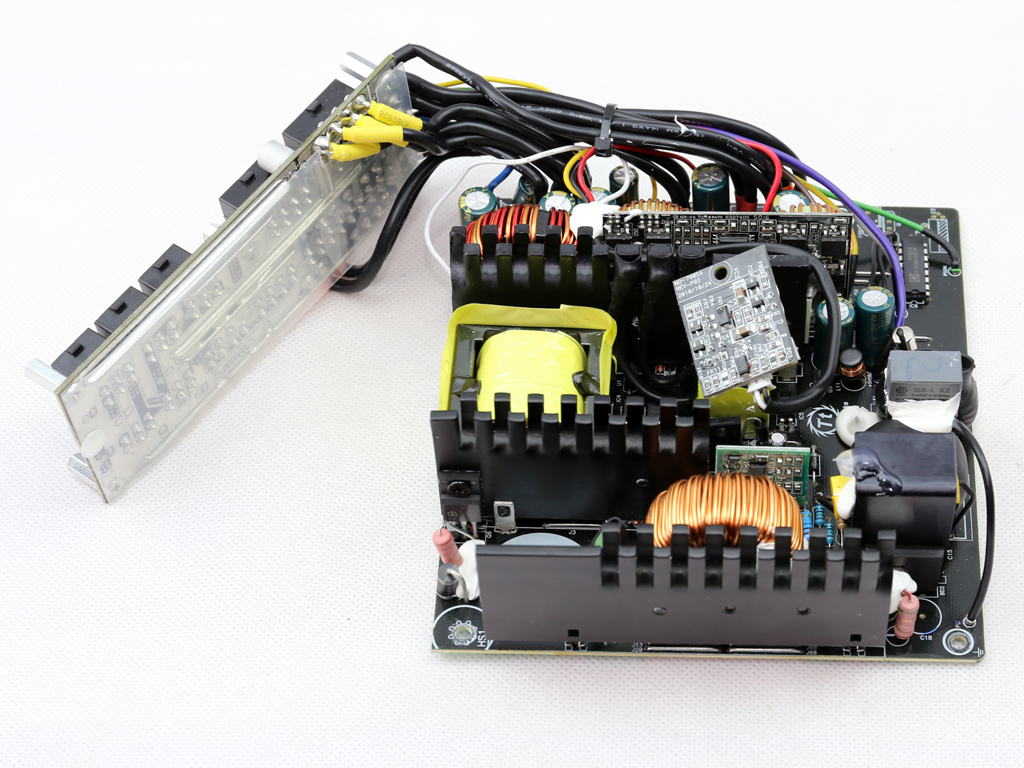
This unit is based on a not so advanced Sirfa platform, which however has an up to speed secondary side. Thermaltake speaks of a Japanese main capacitor, and indeed the only Japanese cap is installed in the APFC converter. It's been a while since we've seen a PSU that doesn't utilize an LLC resonant converter; this PSU's combination PFC/PWM control IC belongs to an older generation. Things look more promising on the secondary side since we find DC-DC converters for generating the minor rails, while a synchronous design handles the +12V rail.
Unfortunately, it doesn't look like Thermaltake used high-quality filtering capacitors, so we wonder why the company chose to arm this PSU with a seven-year warranty.
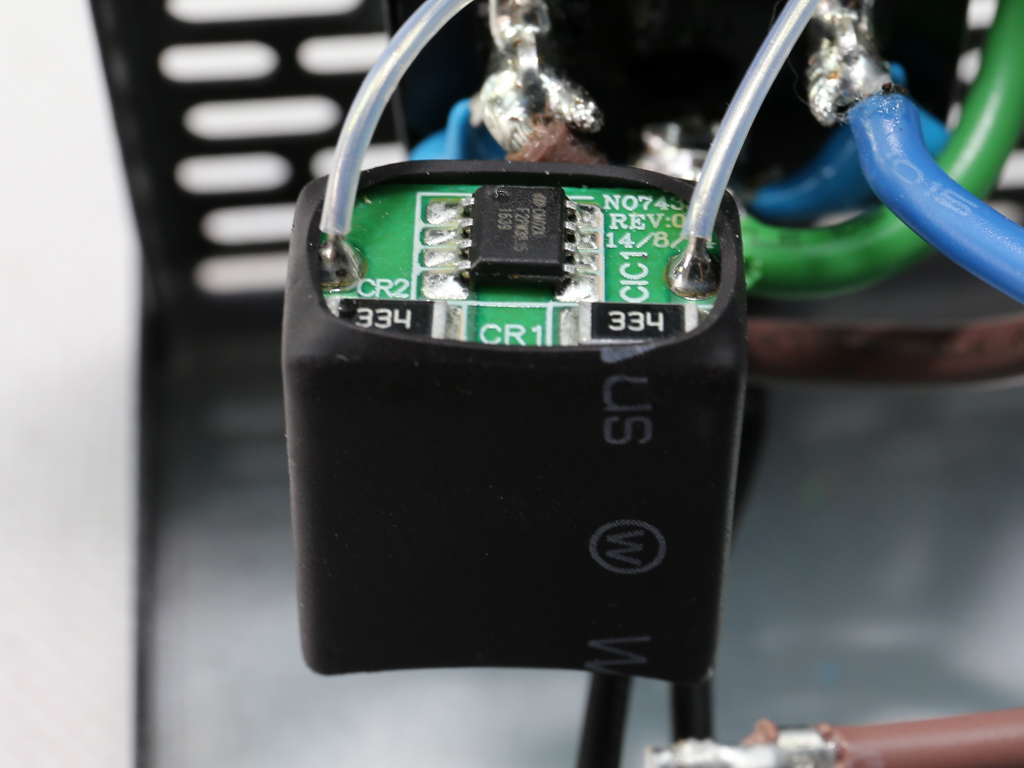


The first part of the EMI filter consists of two Y caps and a single X one. There is also a CM02X that boosts efficiency by isolating the X cap's bleeding resistors once AC voltage is connected. The second part of the EMI filter includes two Y caps and one X cap, two CM chokes, and an MOV, which is always good to see since it protects the PSU from spikes coming from the mains grid.

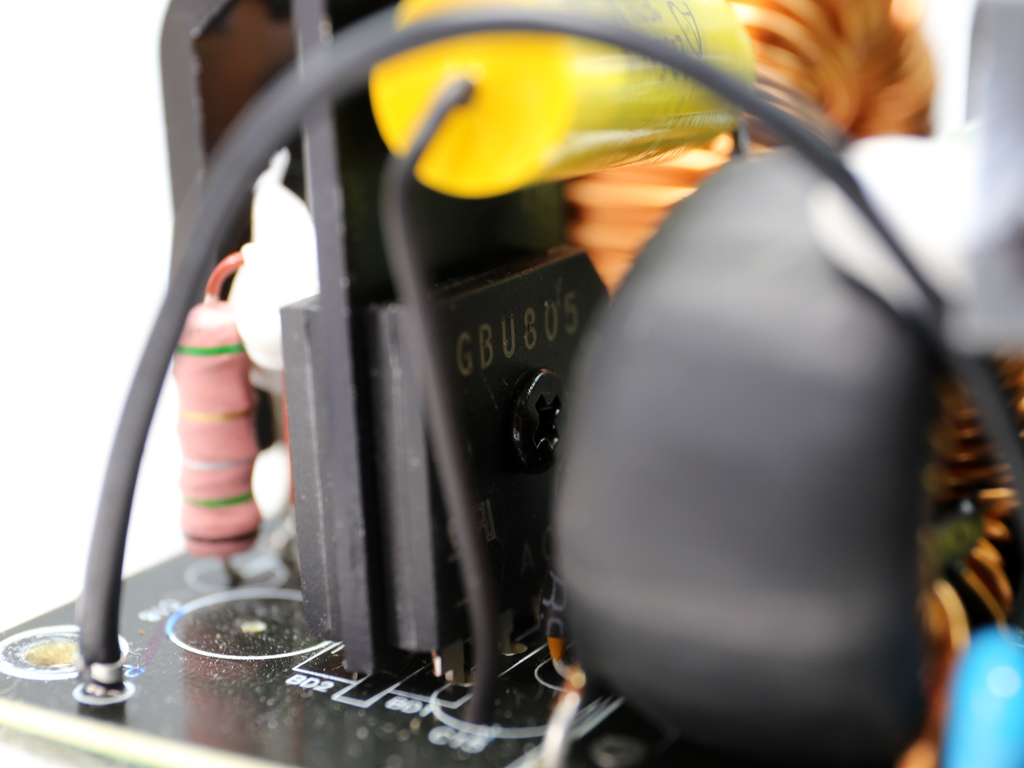
A couple of bridge rectifiers are mounted on a dedicated heat sink. Two parallel GBU805 rectifiers are used for increased efficiency instead of a single, stronger rectifier.


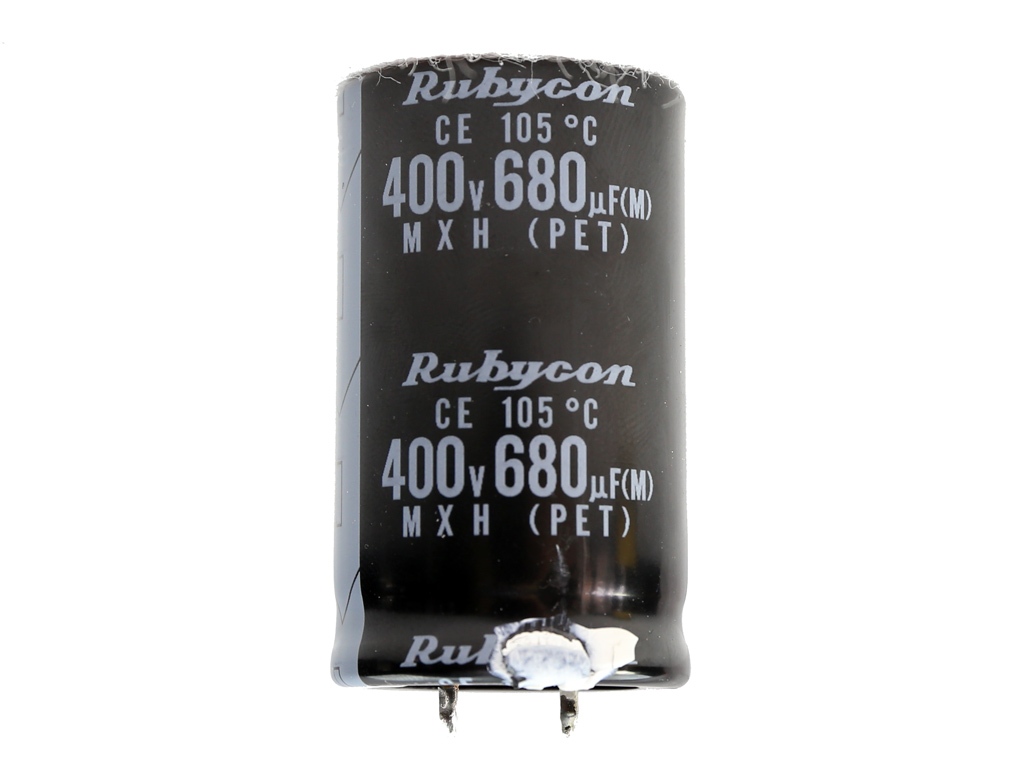
The APFC converter is equipped with two Infineon SPW20N60C3 FETs and a single Unisonic BYC15-600 boost diode. The bulk cap is provided by Rubycon (400V, 680uF, 2000h @ 105°C, MXH) and its capacity is low for this PSU's needs. Moreover, the bulk cap's voltage rating should be higher, since at 400V it's close to the APFC's DC bus voltage (around 380VDC). That will affect its long-term reliability.
Get Tom's Hardware's best news and in-depth reviews, straight to your inbox.
The NTC thermistor that provides protection against large inrush currents is installed before the bulk cap. Unfortunately, it isn't supported by a bypass relay.
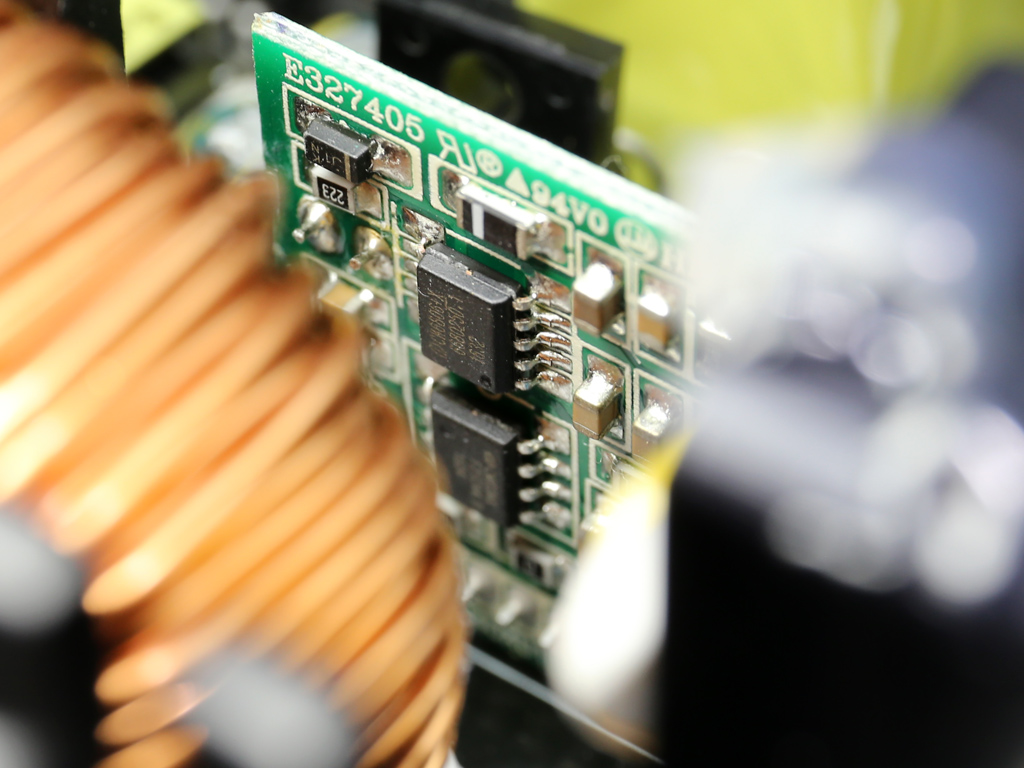

This small daughterboard holds the combo PFC/PWM controller, a Champion CM6806. A CM03AX IC is also used to enable lower energy losses in standby mode.
The main switching FETs are two Infineon IPA50R140CPs, and they look to be installed in a double-forward topology.
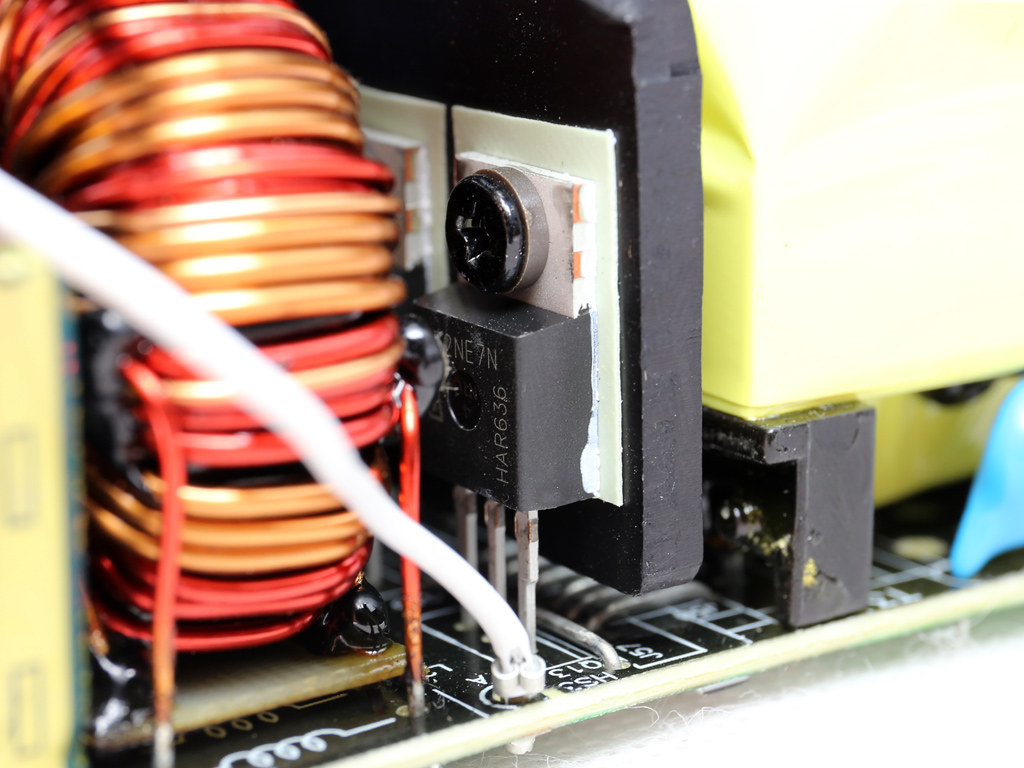
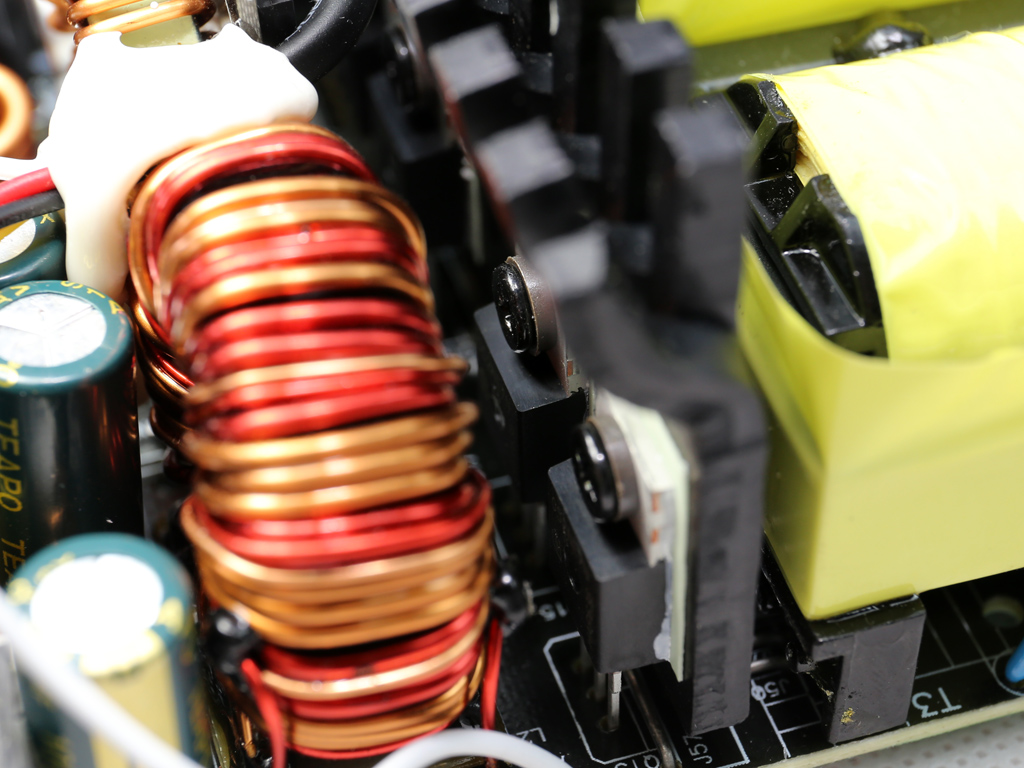

On the secondary side, the +12V rail is rectified by four Infineon IPP052NE7N3 G FETs that are cooled by a large heat sink. We find two thermistors on this sink: one is used by the fan control circuit and the other provides data to the over-temperature protection circuit.
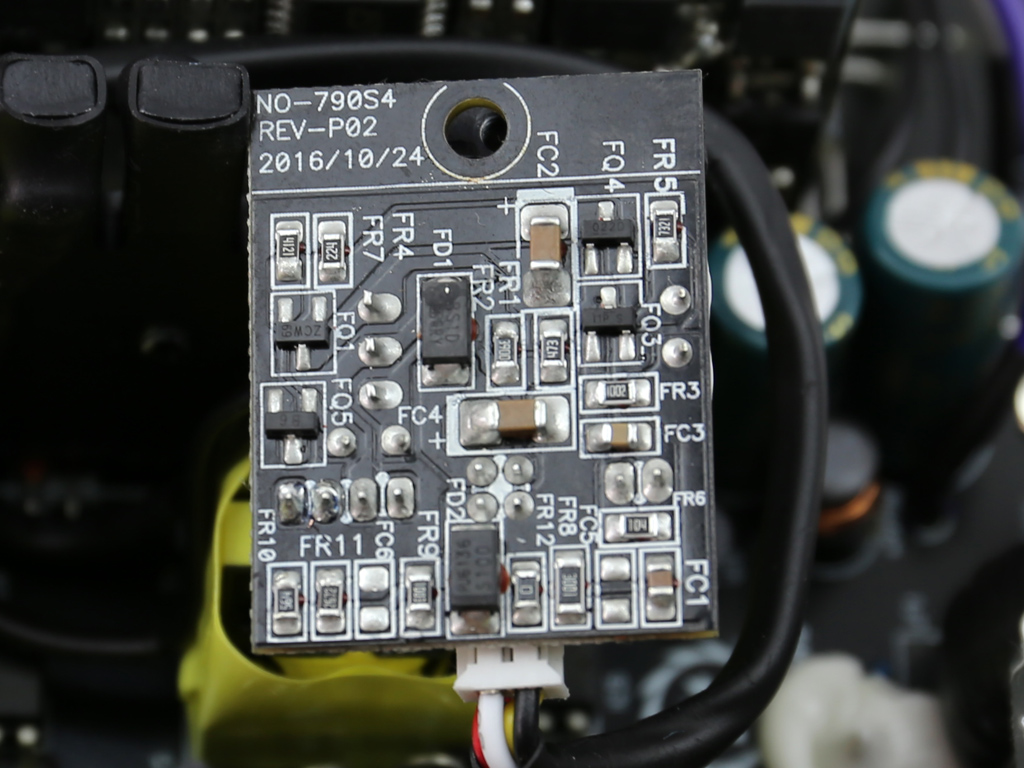

The fan control circuit is attached to the secondary heat sink through a bolt.
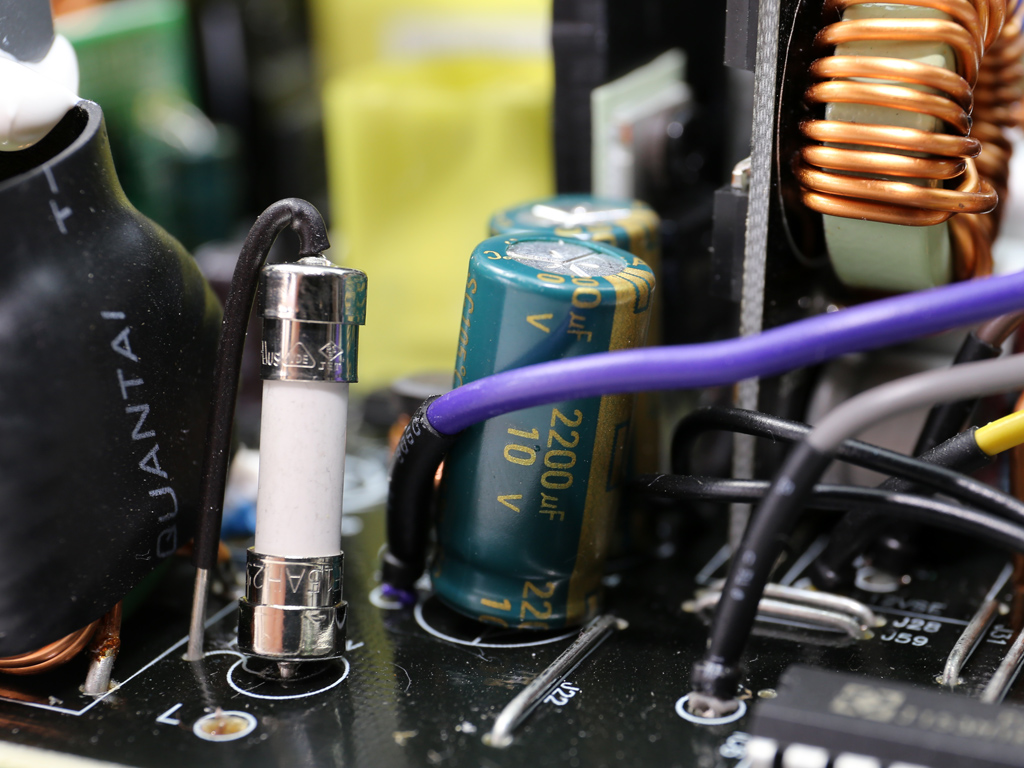
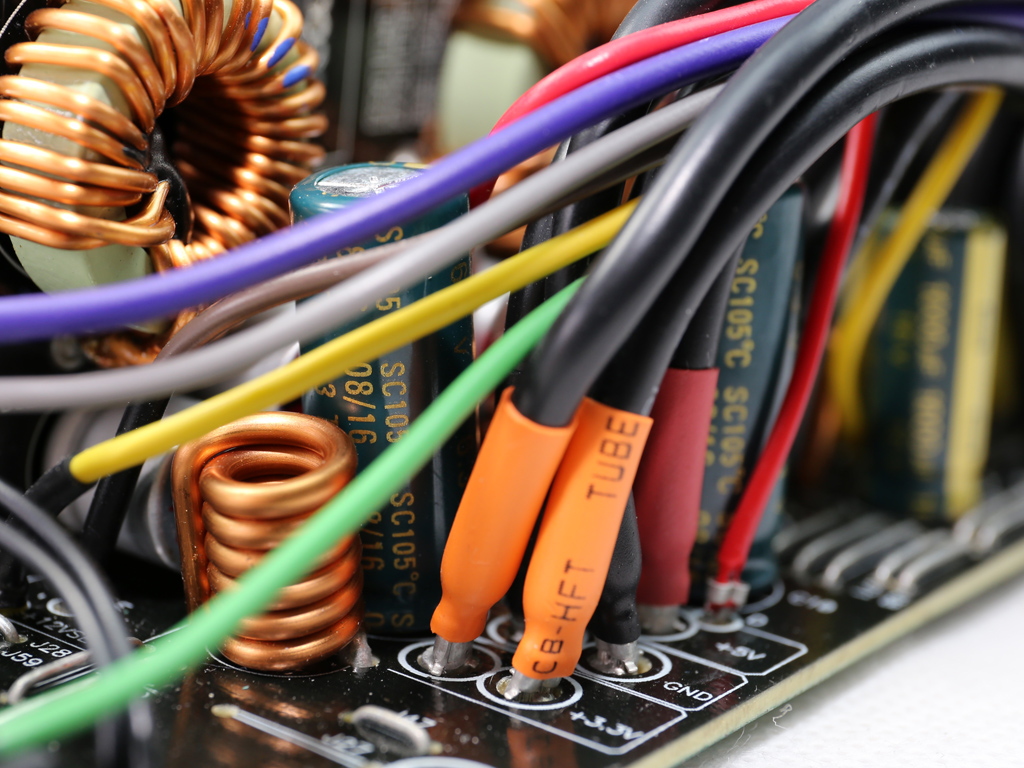
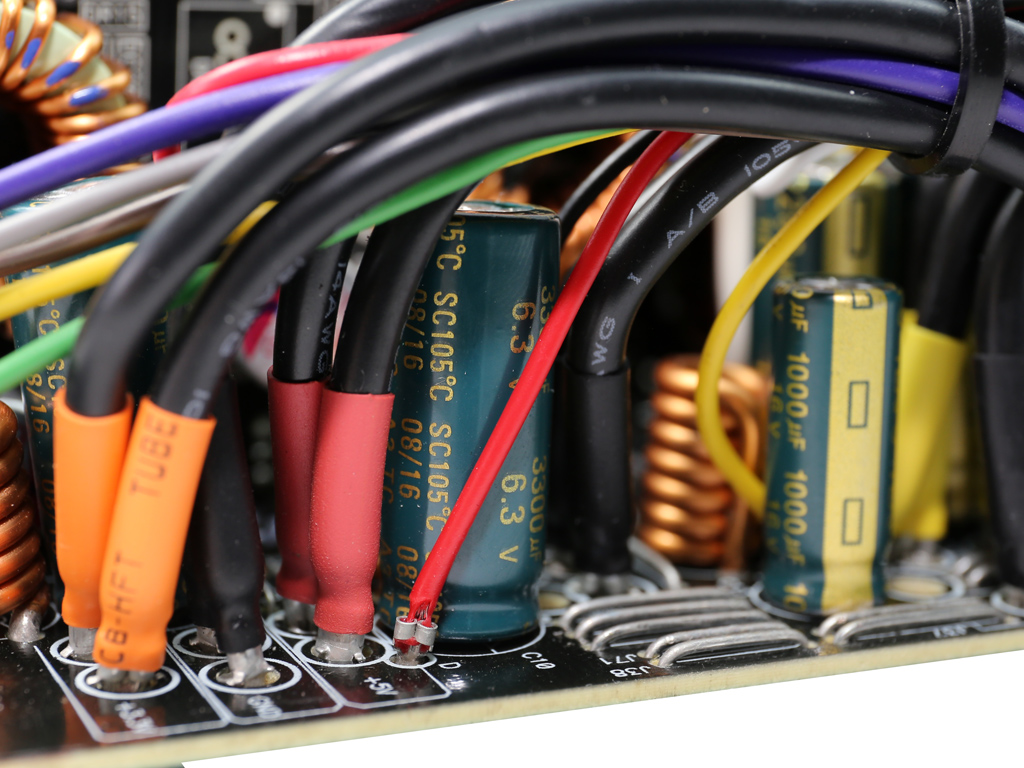
All ripple filtering caps on the secondary side are provided by Teapo, and unfortunately belong to that company's lower-end SC line. Best-case, they're rated for 3000 hours at 105°C. Thermaltake accepts a serious risk by offering a seven-year warranty, given the lifetime of those Teapo caps.


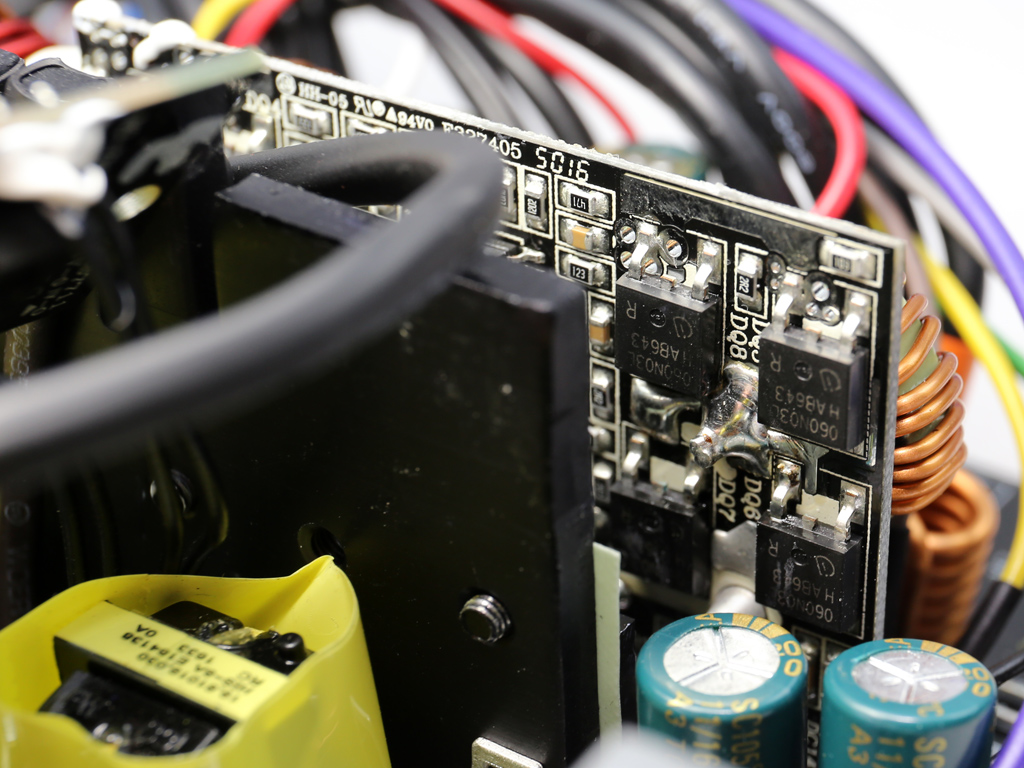
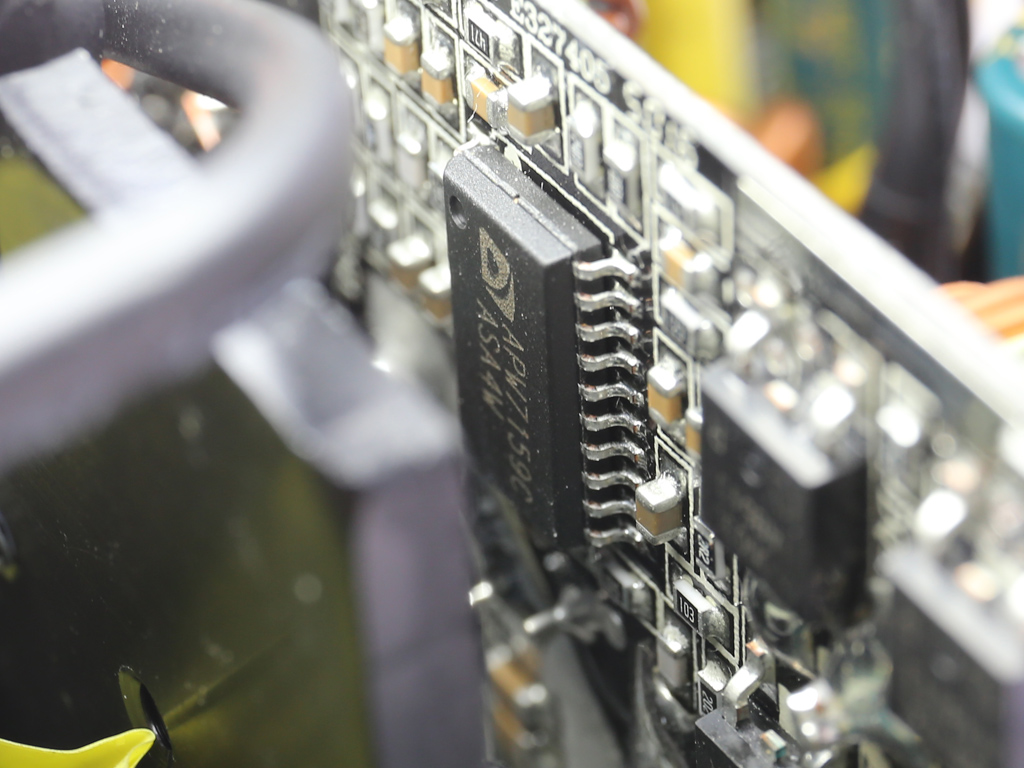
Both DC-DC converters can be found on the same vertical PCB. In total, eight Infineon IPD060N03L G FETs are used, and the common PWM controller is an Anpec APW7159C. Finally, several Teapo polymer caps filter those rails.
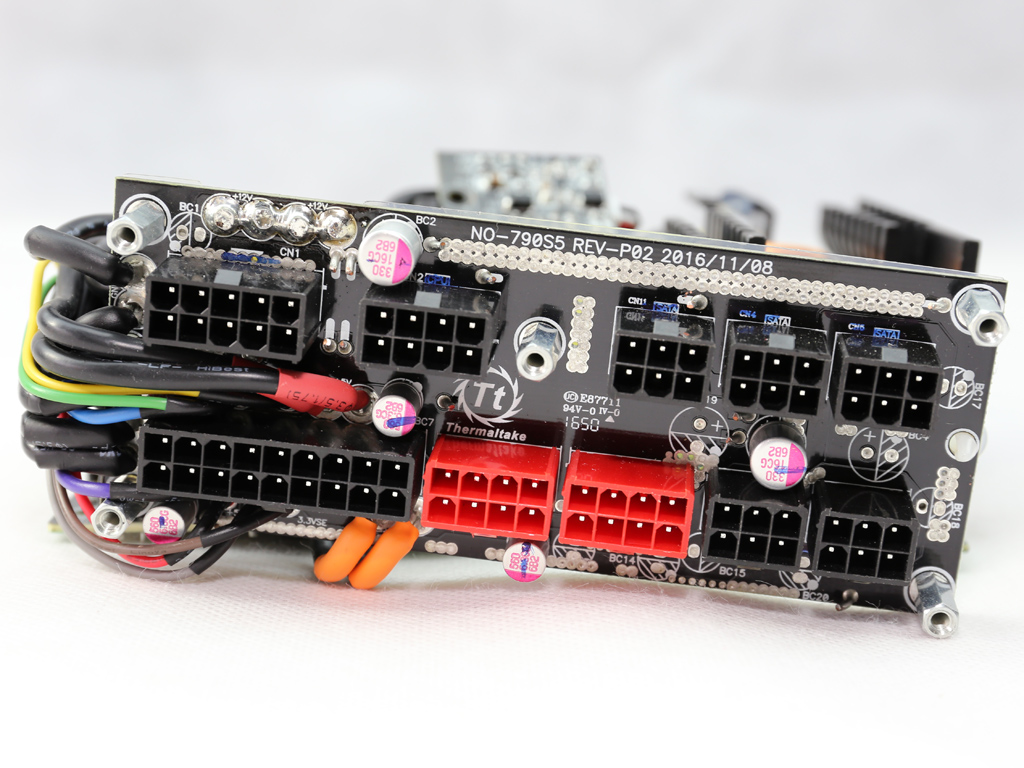
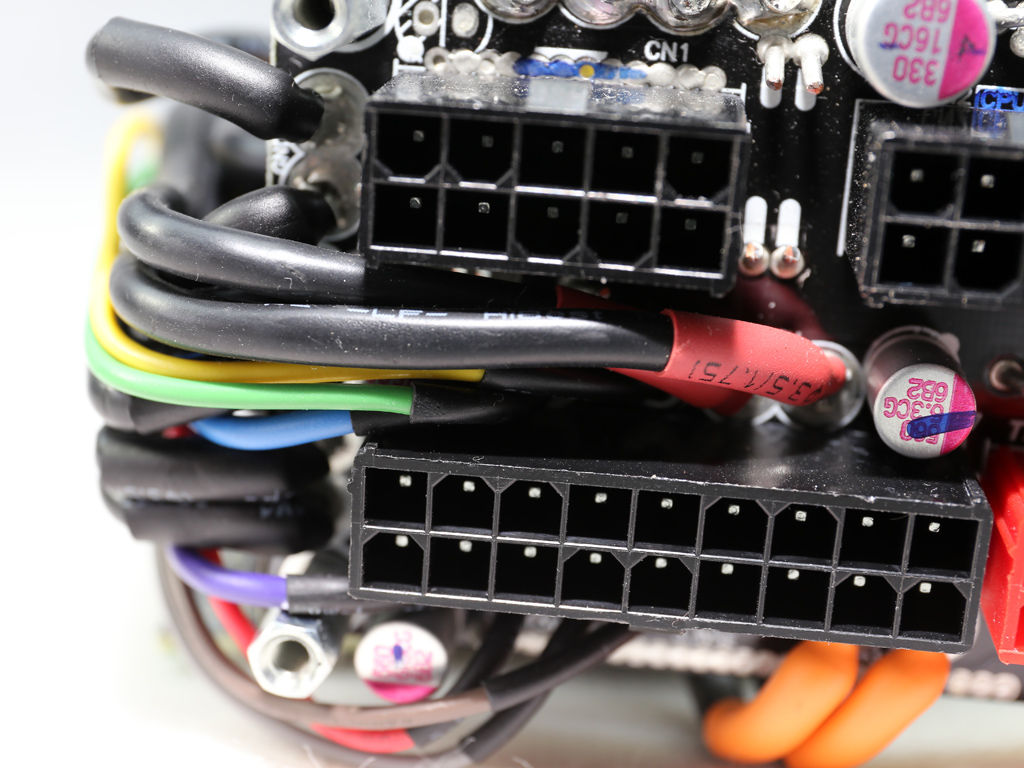
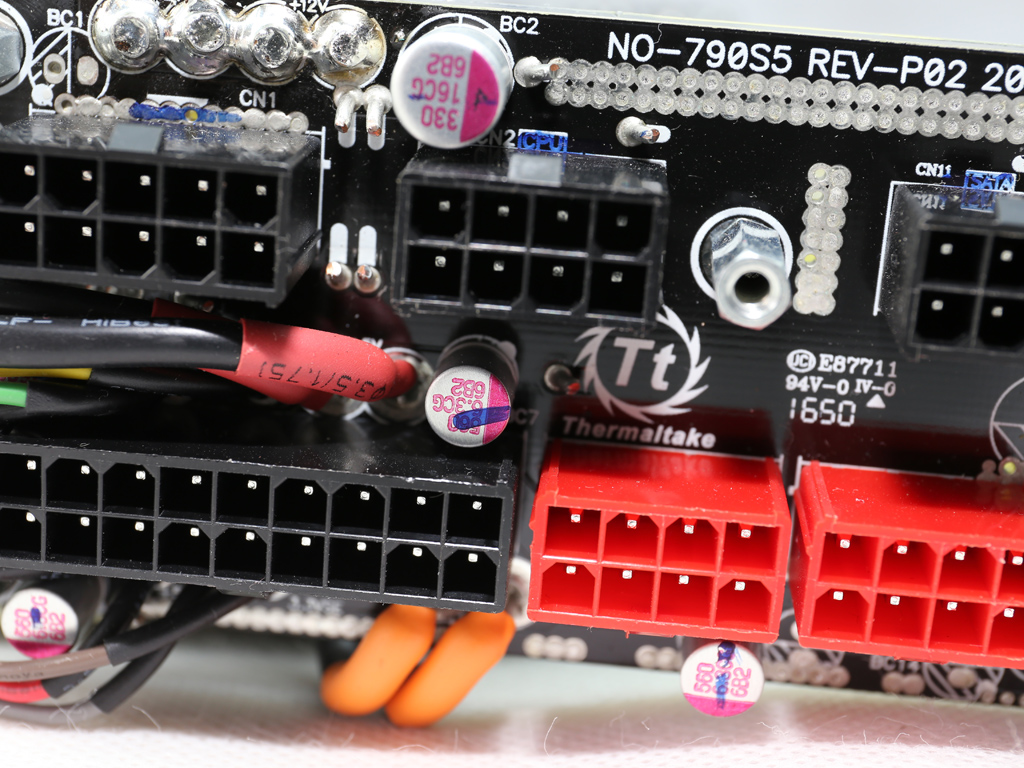
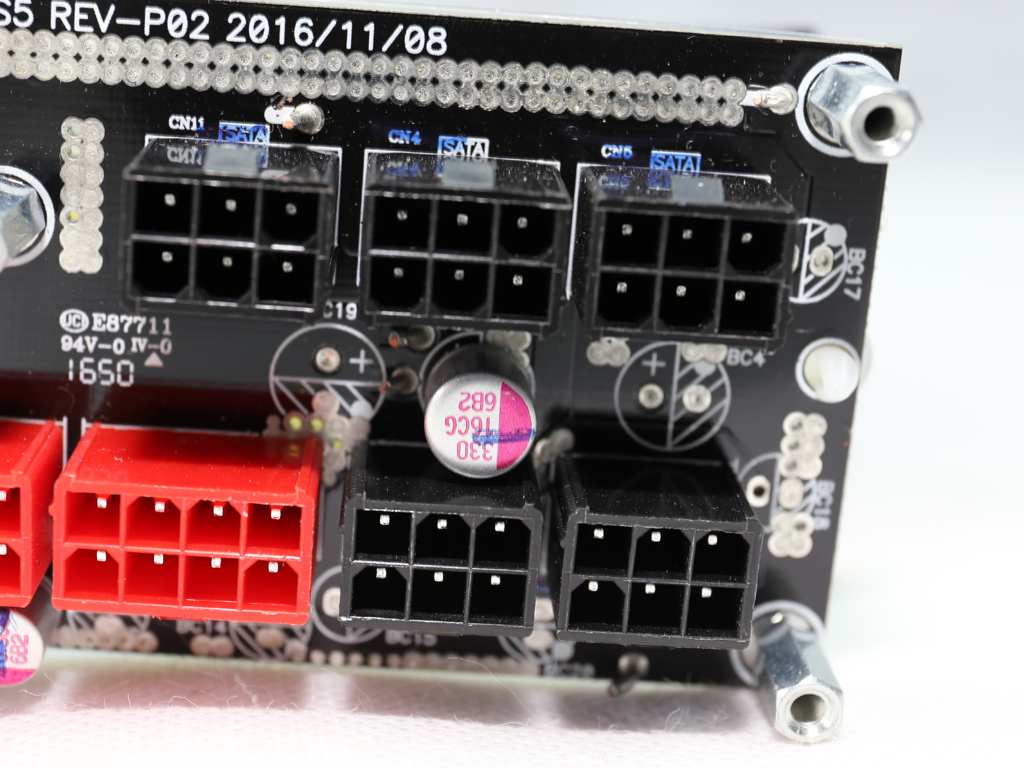
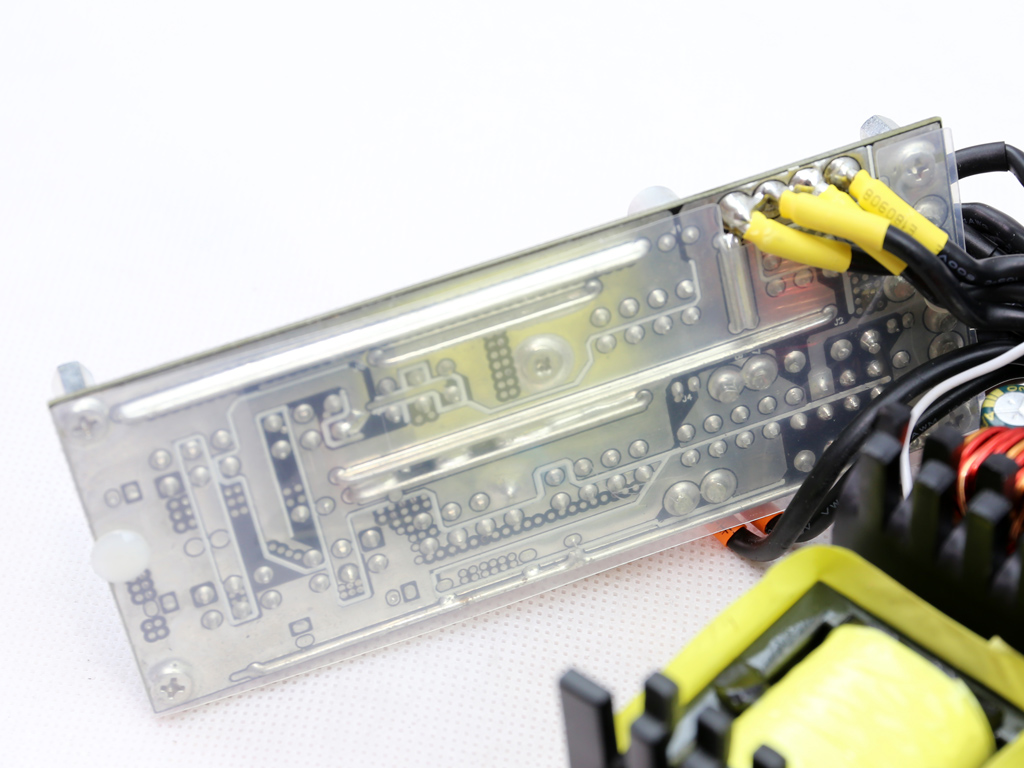

Several Teapo polymer caps on the modular board's front side help reduce ripple.
Housekeeping is handled by a SITI PS224 IC, which supports OCP for up to two +12V rails. Of course, this PSU only has one.

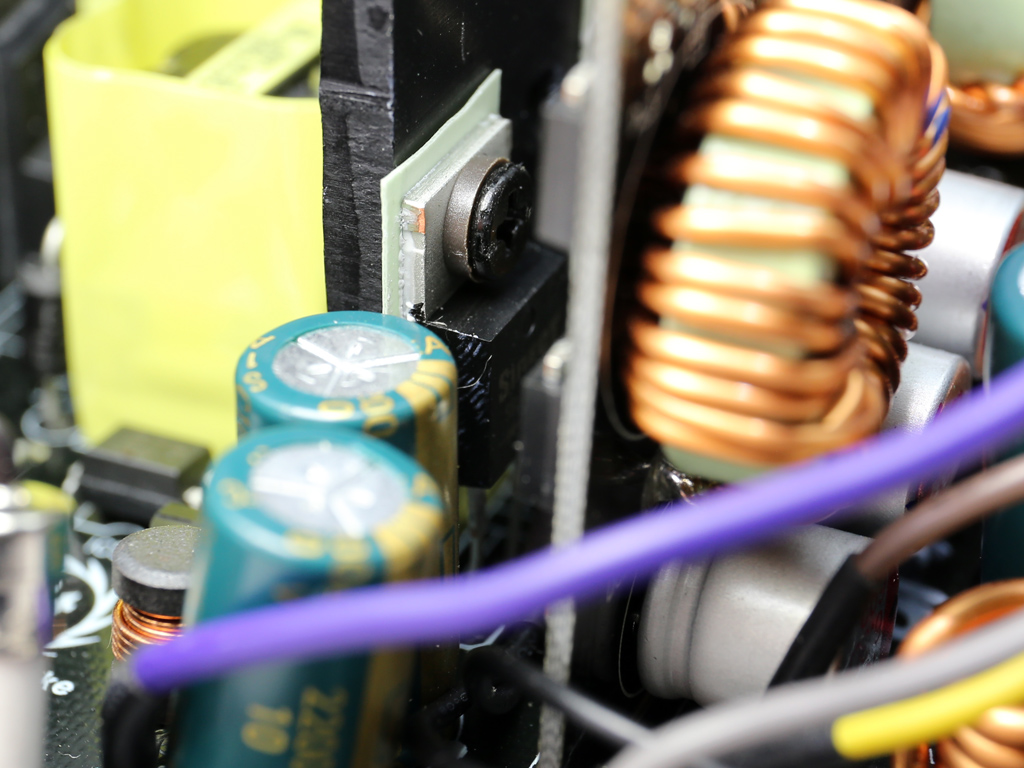
The 5VSB circuit uses a UTC 2N60L switching FET; its rectifier is a SBL05L40C Schottky rectifier diode able to handle up to 5A per leg, or 10A total.
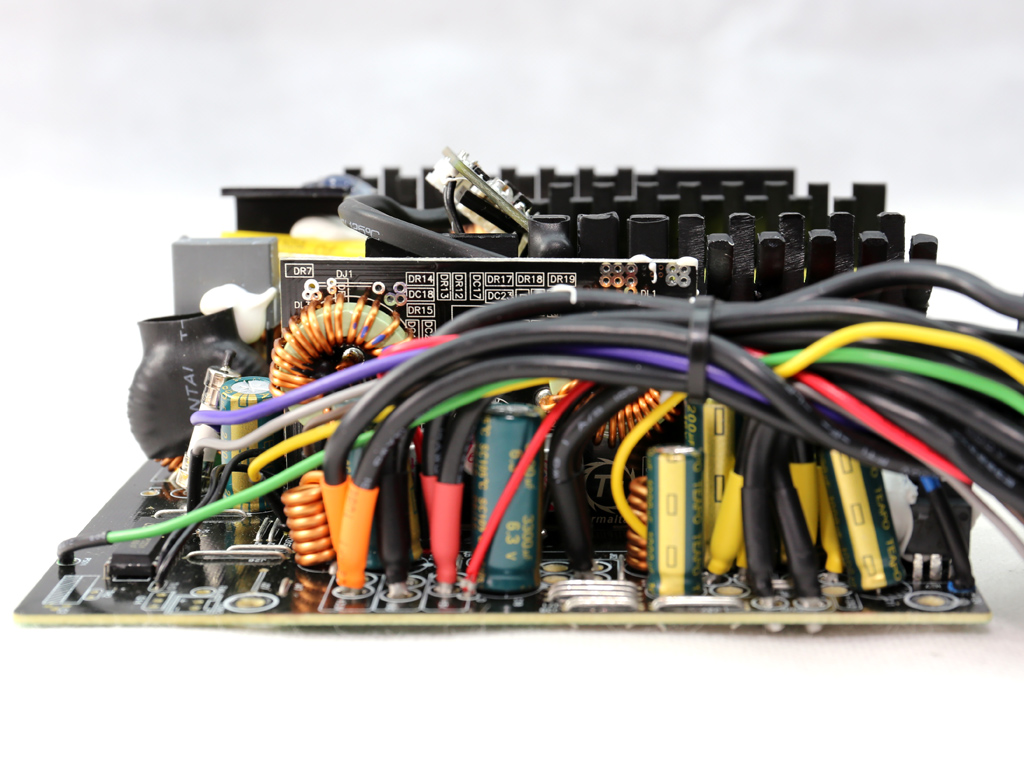
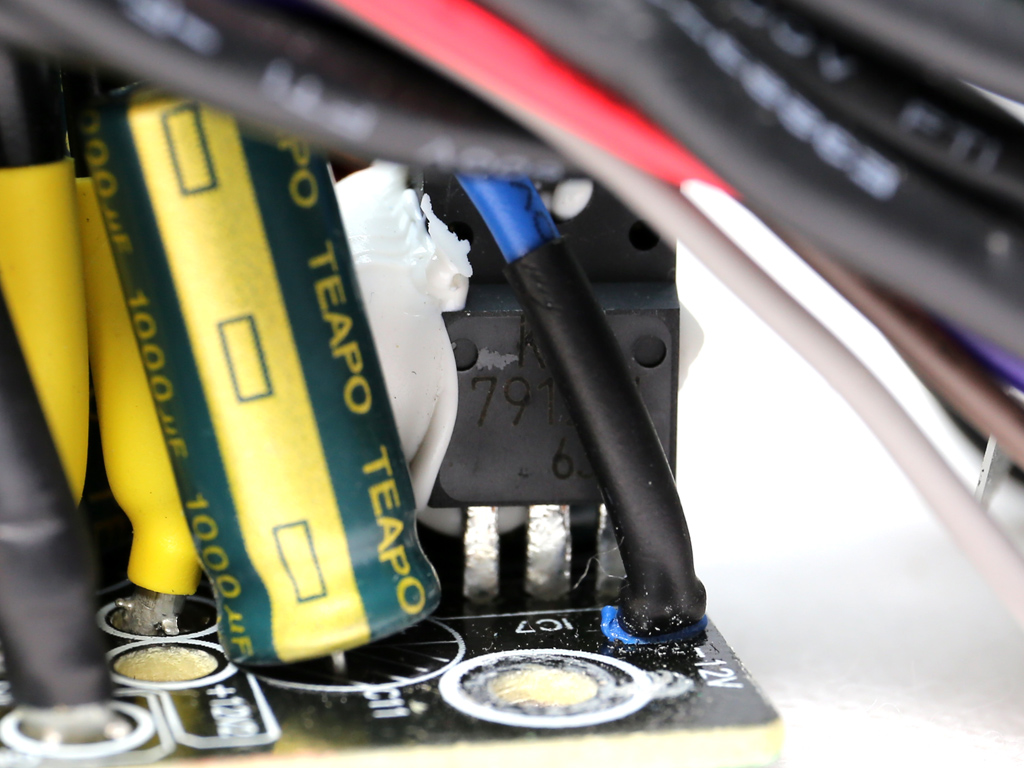
Somewhere on the secondary side and hidden among the wires is the -12V regulator, a KIA 7912PI IC.
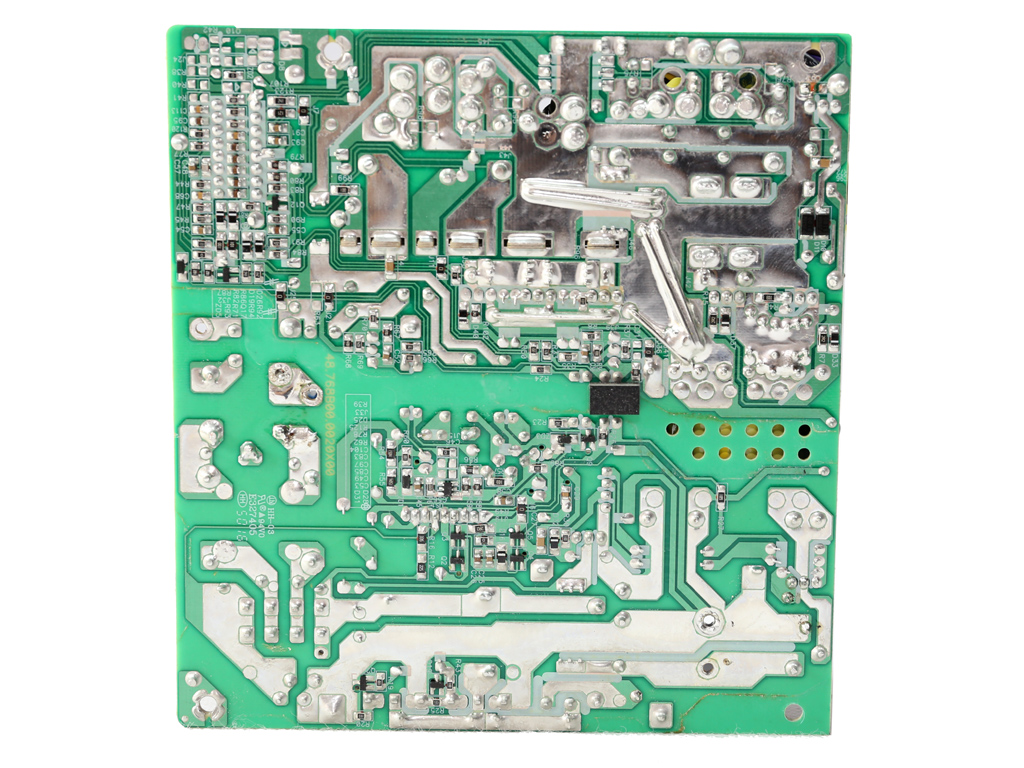
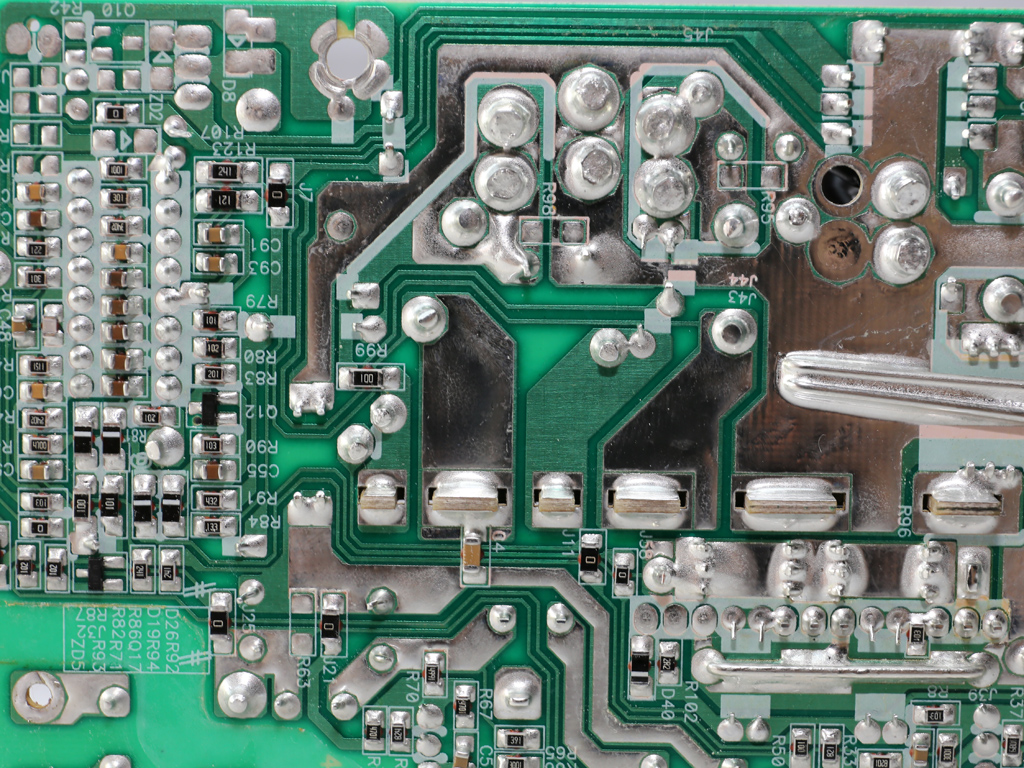
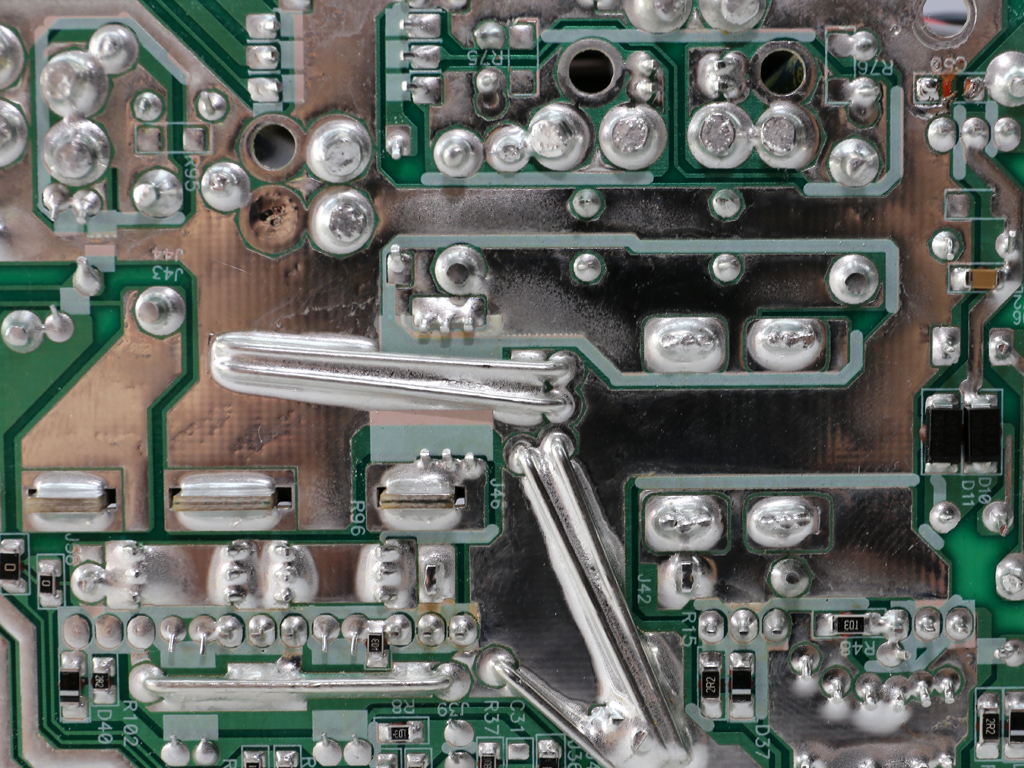
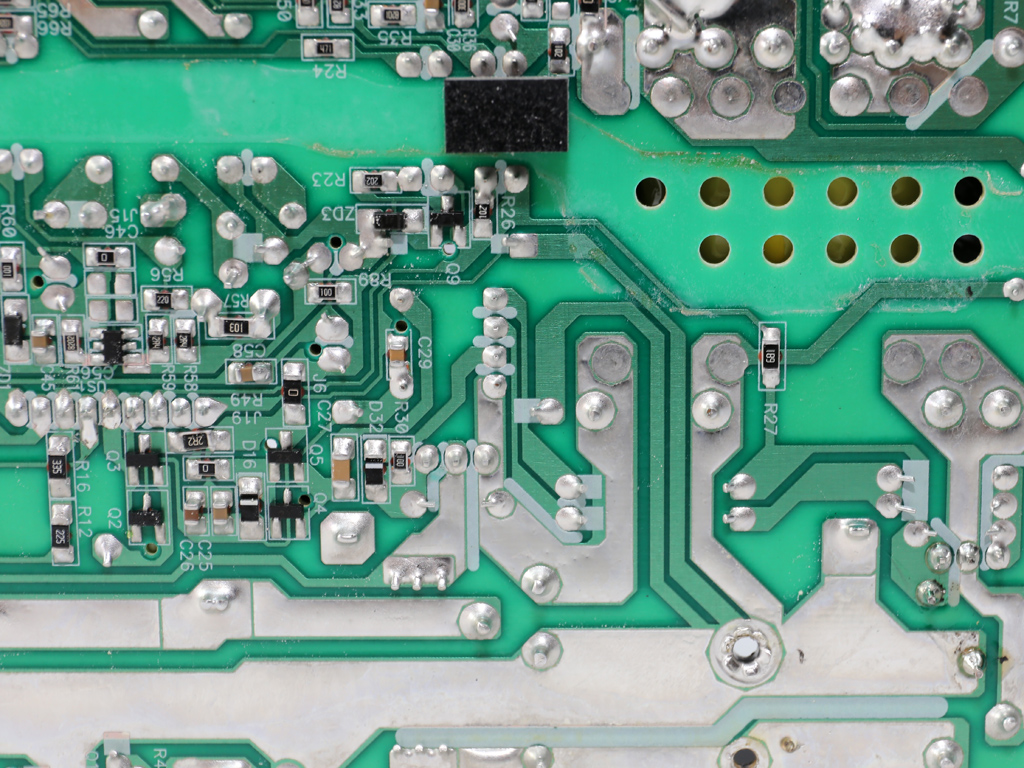

The soldering quality is adequate, especially for this category's standards.

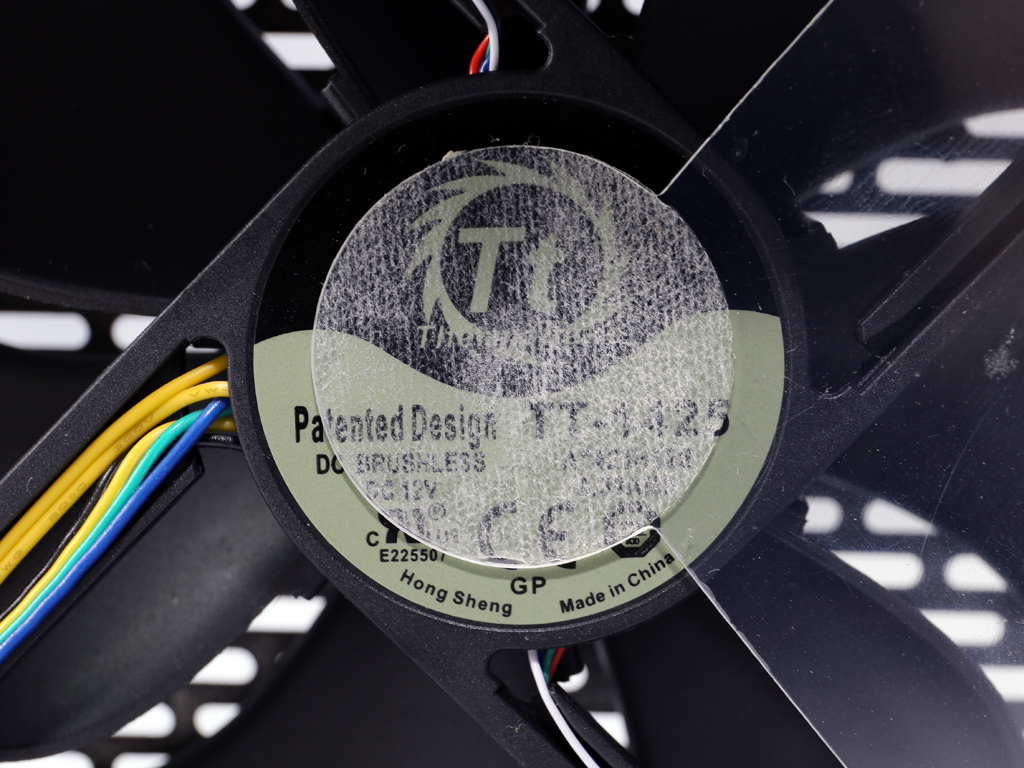
The 140mm cooling fan is made by Hong Sheng and its model number is A1425H12S (9-13.8V, 0.39A, 1800 RPM, 97.2 CFM, 36.2 dB[A]). According to our data, this is a sleeve bearing fan. However, TT claims that it uses a HDB bearing. More than likely, this is an enhanced version of the A1425H12S using a rifle bearing, but we can't be 100% sure unless we totally destroy the fan and cut its bearing in half.
MORE: Best Power Supplies
MORE: How We Test Power Supplies
MORE: All Power Supply Content
Current page: Teardown, Component Analysis & Bonus Safety Video
Prev Page Packaging, Contents, Exterior & Cabling Next Page Load Regulation, Hold-Up Time & Inrush Current
Aris Mpitziopoulos is a contributing editor at Tom's Hardware, covering PSUs.
